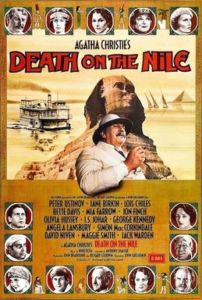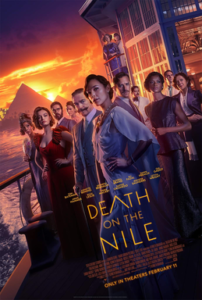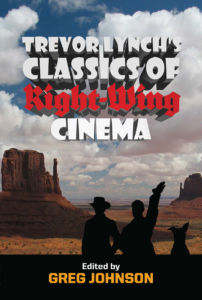1,154 words
There’s a reason why Agatha Christie is the world’s best-selling author. Her whodunnits are cleverly crafted, well-written, and highly entertaining. I also find them wholesomely Eurocentric, which is problematic these days.
Death on the Nile (1937) is one of her best novels. A shot rings out onboard a luxurious Nile steamer. It is clearly a case of foul play. But the two prime suspects have airtight alibis. Moreover, practically everybody else on the ship had means, motive, and opportunity to do the deed. Even Hercule Poirot’s famous gray cells are baffled . . . for a time.
The almost perfect crime is cleverly constructed, and its unravelling is profoundly satisfying. Thus it is little surprise that Death on the Nile has been adapted twice for the big screen, first in 1978 then again in 2022. A comparison of the two films makes shockingly clear how far and fast our culture has declined in the last few decades.
Death on the Nile (1978) was a mainstream, big-budget, all-star film directed by John Guillermin. In the gritty, grubby, sleazy seventies, Guillermin’s Death on the Nile looks like a throwback to an earlier age of filmmaking, with its long running time, leisurely pace, beautiful orchestral score by Nino Rota, highly literary dialogue (in English, German, and French), and lavish period costumes and settings. (The film won the Oscar for costume design.)
Peter Ustinov is the best Hercule Poirot ever, softening the character’s arrogance and priggishness with warmth and French Belgian urbanity. Mia Farrow is both beautiful and compelling as Jacqueline de Bellefort. Simon MacCorkindale is a strong Simon Doyle. Lois Chiles is strikingly beautiful as Linnet Ridgeway, but her voice is flat and her acting wooden. She’s really the only weak link, though.
Other outstanding cast members include David Niven as the dashing Colonel Race (complete with sword cane), Bette Davis as American heiress Mrs. Van Scuyler, Maggie Smith as her nurse Miss Bowers, Angela Lansbury as romance novelist Salome Otterbourne, Olivia Hussey as Salome’s daughter Rosalie, and Jack Warden as Dr. Bessner.
 Guillermin largely shot Death on the Nile on location in Egypt and makes very effective use of ancient monuments, Nile landscapes, and local color. The actors must have been troupers, since during filming temperatures reached 130 degrees Fahrenheit. Most of them seem to be enjoying themselves, especially David Niven and Peter Ustinov. The script by Anthony Shaffer drops a few minor characters from a crowded cast but remains faithful to the spirit and complex plot of Christie’s novel.
Guillermin largely shot Death on the Nile on location in Egypt and makes very effective use of ancient monuments, Nile landscapes, and local color. The actors must have been troupers, since during filming temperatures reached 130 degrees Fahrenheit. Most of them seem to be enjoying themselves, especially David Niven and Peter Ustinov. The script by Anthony Shaffer drops a few minor characters from a crowded cast but remains faithful to the spirit and complex plot of Christie’s novel.
There are a few flaws.
Guillermin could have tightened the scenes in which Poirot imagines how different people on the boat might have committed the first murder.
The only touch of seventies cinematic sensibilities is an excess of blood. It is a lapse of taste.
There are also continuity problems. The boat journey where most of the action happens starts at Aswan, headed south to the Sudan. A day later they arrive in Luxor, more than 400 miles to the north, where they visit the temples of Karnak and Luxor. Dr. Bessner confuses Luxor Temple with Karnak Temple. Then Simon and Linette announce at Karnak that they are headed off to see the Temple of Abu Simbel that afternoon. That would be more than 600 miles back up the Nile, south of Aswan. Then Dr. Bessner conflates the Temple of Abu Simbel with the Colossi of Memnon, which are just on the other side of the Nile from Luxor. Finally, the boat trip ends in Wadi Halfa, even further to the South in Sudan. Christie, who was married to an archaeologist and actually visited Egypt, would never have made such errors. It would have been easy enough to square the script with the map, so such sloppiness smacks of cynicism.
Although the film delivers a boatload of murder and pathos, it is leavened by wit and gentle humor, as well as the over-the-top comic relief of Angela Lansbury’s Salome Otterbourne, who — with her overcharged erotic imagination and perpetual nipping and tippling — steals every scene she is in. Bette Davis as a grande dame and Maggie Smith as her mannish nurse inevitably verge on camp, but you relish every minute of it. I. S. Johar’s Hindu buffoon Mr. Choudhury is a bit much, however. It is interesting, though, that the one non-white character added to the script is a figure of fun.
Guillermin’s Death on the Nile is a good movie, not a great one. But at least it aspires to greatness. It plays like Lawrence of Arabia when compared to the 2022 Death on the Nile, directed by Kenneth Branagh, who also plays Poirot. The movie begins with a prologue that has nothing to do with Christie. But I was even more baffled when it shifted to Christie’s novel. I didn’t recognize it at first.
 The story begins in a jazz club in London. Salome Otterbourne is a middle-aged, high yella, American jazz singer. Salome is no longer a reeling drunkard and a clown. She’s a goddess, and Poirot is clearly romantically infatuated with her. (Or maybe it is just gay diva-worship. My hypothesis is that the romance in the prologue was invented solely to forestall this conclusion.)
The story begins in a jazz club in London. Salome Otterbourne is a middle-aged, high yella, American jazz singer. Salome is no longer a reeling drunkard and a clown. She’s a goddess, and Poirot is clearly romantically infatuated with her. (Or maybe it is just gay diva-worship. My hypothesis is that the romance in the prologue was invented solely to forestall this conclusion.)
Rosalie Otterbourne is Salome’s coal-black niece and sassy manager. We first see her showing the honky who owns the club who’s boss. Later, she too is upheld as a goddess and worthy marriage partner . . . for a wealthy white man . . . in the 1930s.
Other cast members have been diversified as well. Linnet Ridgeway is played by Israeli actress Gal Gadot, who does not hold a candle to Lois Chiles in the looks department and is scarcely better as an actress.
American lawyer Andrew Pennington, played by George Kennedy in 1978, has become an Armenian named Andrew Katchadourian, played by an Indian Muslim named Ali Fazal. Somehow this Armenian is actually Linnet’s cousin. When the Armenian gets off the boat at the end, he makes a comment about the prejudices he faces as a brown man carrying a gun. This is in Egypt, mind you.
Mrs. Van Schulyer is played by Jennifer Saunders and Bowers by Dawn French. In this adaptation they are both lesbians, something Maggie Smith’s Bowers only tastefully hinted at.
Even ostensibly white characters act black. Simon Doyle and Jacqueline de Bellefort are introduced on the dance floor at the club, twerking and grinding. Later, there’s more twerking and grinding with Simon and Linnet at the Temple of Abu Simbel.

You can buy Trevor Lynch’s Classics of Right-Wing Cinema here.
The fact that the Abu Simbel scene was shot on a soundstage even allowed Branagh to rework the colossal statues of Ramesses II — with his thin lips and aquiline nose — to look a bit like George Floyd.
Christie’s central plot is still intact, but it is scarcely possible to enjoy it. Everything about this film, save the handling of the final gunshot, is inferior to the 1978 version. The cast, performances, sets, and costumes are lackluster. The whole film was shot on soundstages, and looks it. The pervasive wokeness is ham-fisted and vulgar. The disgusting Negro-worship is just BLM-era cinematic reparations. But this film doesn’t fail through accident and oversight. It is relentlessly purposeful, meticulously constructed, and entirely cynical anti-white garbage.
At one point, I had the wicked thought that Branagh was actually adapting Christie’s biggest seller, Ten Little Niggers (1939), now published under the less problematic title And Then There Were None. But there are no blacks in Ten Little Niggers — at least until Branagh gets his hands on it.
* * *
Like all journals of dissident ideas, Counter-Currents depends on the support of readers like you. Help us compete with the censors of the Left and the violent accelerationists of the Right with a donation today. (The easiest way to help is with an e-check donation. All you need is your checkbook.)
For other ways to donate, click here.
Death%20on%20the%20Nile%0A%281978%20andamp%3B%202022%29%0A
Share
Enjoyed this article?
Be the first to leave a tip in the jar!
Related
-
The Fall of Minneapolis
-
Notes on Plato’s Gorgias, Part 13
-
It’s Time for Republicans to Start Pandering to Whites
-
Counter-Currents Radio Podcast No. 599: More on the US Presidential Election
-
Adolph Schalk’s The Germans, Part 2
-
Adolph Schalk’s The Germans, Part 1
-
Nowa Prawica przeciw Starej Prawicy, Rozdział 15: Ten dawny liberalizm
-
Notes on Plato’s Gorgias, Part 12

13 comments
There’s an excellent film version of And Then There Were None starring Walter Huston and Barry Fitzgerald. Not Walter Huston’s best work but a good film nonetheless.
Thanks for the tip. I don’t have much time anymore to read simply for fun, but whodunnit’s are my favorite form of light reading. Sherlock Holmes is my favorite character in all of literature. But I first read Agatha Christie when I was about 12 years old, and though I never took to Poirot until I saw Ustinov play him in Death on the Nile, I loved the Miss Marple stories.
Man, you sound very similar to me. I first started reading Christie in the early 70s, when I was around that age. And Then There Were None (ATTWN), checked out from my school library, was the first book of hers I read. It blew me away. I subsequently purchased and read all of the Christie novelistic canon (she wrote 66 mystery novels), and most of the short stories (though I’ve always disliked the short stories in comparison with the novels), by the time I started college. For decades, I would only reread a Christie on the rare occasions I was sick in bed (ie, too miserable to read something more demanding). To this day, ATTWN is perhaps the one Christie that I probably can never reread as I remember the plot so well. I think it was one of her very best (and by far the most memorable to me).
This year, for whatever inexplicable reason, I’ve actually rediscovered Christie (inspired perhaps by my pre-film rereading of Death on the Nile), and have been furiously rereading her novels. I think I’ve gotten through 15-16. Just 20-30min in bed pre-sleep, but it adds up. I alternate that regimen with an occasional Lovecraft story.
I read the collected Sherlock Holmes stories, which I have in a one volume hardback from the early-70s, mostly in grade school, the last in early high school. I’ve been thinking for years of taking another look at them. It’s been nearly a half century since I read a Holmes story. They were, of course, very good, too.
I like crime novels, and have read many for fun as an adult. Noir is my favorite genre fiction. Soho Press puts out a lot of good stuff. I do like some of the justly famous modern Scandinavians (Mankell, Nesbo). I strongly suspect you would very much like James Ellroy. I think he’s my favorite non-literary fiction (though it should be noted that his Underworld USA trilogy – American Tabloid, The Cold Six Thousand, Blood’s a Rover – has in a sense been admitted into the ‘canon’: they’ve been republished in two Everyman’s Library volumes; this trilogy is propulsively as well as intelligently entertaining).
I will look into Ellroy. Thanks for the tip.
Great place to start with Ellroy is his “L.A. Quartet” series: Black Dahlia, The Big Nowhere, L.A. Confidential (which was made into a very watchable movie in the 90s), and White Jazz. Nobody can do post-WWII L.A. noir like Ellroy can.
I’m glad they made this movie (the 2022 version), only because it provided the material for this very good review, which confirms my habit of avoiding movies entirely. It sounds even worse than I could have imagined. They could shut the whole industry down and I would miss it about as much as one of those small-town testicle-eating festivals.
Thanks. I watched both movies this summer. I didn’t want to write something, but the sheer vulgarity and awfulness of the Branagh film gnawed at me. Writing this review got it out of my system.
Ahh, perhaps my several references to the sheer awfulness of the 2022 remake of Death on the Nile in CC comments inspired Mr. Lynch to review it and its predecessor (which I also saw, though way back in high school in the 70s). I look forward to reading this review once it escapes the paywall.
As for the 2022 version, I’m sure Lynch notes the myriad nonwhite characters, none of whom were in the actual novel (nor was the wealthy protagonist a raven-haired Jewess, like the Wonder Woman actress; in the novel she was blonde). But the worst feature was the almost incredible ass-kissing that Branagh/Poirot directed towards the two black women (there were no blacks in the novel). “Oh, how brilliant you are, radiant, beautiful” etc truly ad nauseam. There of course had to be gratuitous queers (in this case, some “oppressed” lesbians – not in the novel, obviously). And the villains were, of course, very modally white /Aryan types (the one and only admirable aspect of this wretched POS movie was that the villainess was really hot, an actress with a future, I predict).
Prowhites should see this movie, preferably in a social group (maybe including some educable normies), just to recharge their racial rage.
Yes, I have to thank you for mentioning Branagh’s abomination.
I watched the first 20 minutes or so of the 2022 version in the company of my woke, BLM-supporting, male-name affecting sister. Even she found it vacuous and annoying.
The BBC recently made a really good version of And Then There Were None with Charles Dance. Aside from a brief swipe at colonialism, nothing really woke about it.
Long before it began wallowing in Wokeness, the BBC made several very good, enjoyable adaptations of Miss Marple stories in the 1980’s, with Joan Hickson. They’re loaded with talented British character actors of the time, and Agatha Christie herself had encouraged Hickson to play the role when the latter was a younger woman.
I also like David Suchet’s Poirot series from the 1990’s, filled with period details, beautiful settings and humor. Based on what I saw, that humorous quality was ditched in the later episodes of the 2000’s, which often just dwelled on ugliness, unlike the Christie books that I’ve read.
In my very favorite mystery programs, Ian Carmichael played Dorothy Sayers’ aristocratic detective Lord Peter Wimsey with great verve and wit in the 1970’s.
Kenneth Branagh really deserves contempt because he is actually talented and still has constantly played to the PC and woke crowd. He is subverting what he should sustain. Even his 1996 Hamlet was littered with random non-white actors in minor and supporting parts for no discernable reason whatsoever.
Comments are closed.
If you have Paywall access,
simply login first to see your comment auto-approved.
Note on comments privacy & moderation
Your email is never published nor shared.
Comments are moderated. If you don't see your comment, please be patient. If approved, it will appear here soon. Do not post your comment a second time.
Paywall Access
Lost your password?Edit your comment